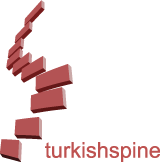ABSTRACT
Congenital chest wall deformities inhibit patients due to esthetically unpleasant appearance even in the absence of functional cardiac or pulmonary deficit. In most cases the need for correction is based on evident social adaptive difficulties and impairment of worth living sense.
Thoracic scoliosis is seen either with congenital chest wall deformities de novo, or after costal cartilage harvesting, minimal invasive or open correction of chest wall deformities. Anterior chest wall deformities can be put under 5 main categories: Pectus Excavatum, Pectus Carinatum, Poland Syndrome, sternal defects, thoracic deformities seen in diffuse skeletal disorders.
Conservative treatment methods such as using corset are manipulated for starting treatment in childhood and specifically in pectus carinatums. Nuss technique or modifications that are in invasive (Ravitch chondroplasty) or minimal invasive techniques are carried out on elderly people and under the circumstances when conservative methods are unsuccessful. Also vacuum waist technique is one of the treatment methods used in selected cases or for the treatment of the people who do not accept the operation.
In this collection; clinical findings of congenital chest deformities, its classification, embryology, pathophysiology and diagnostic techniques that are mainly used are stated. Also, in company with changing literature; operation indications and traditional surgical correction treatment methods with less invasive new methods are reviewed.



